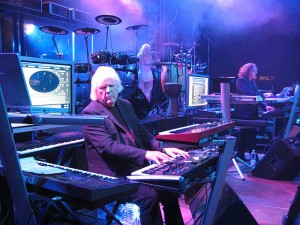From his days with with a psychedelic pop band called The Ones to the first Tangerine Dream recording, Electronic Meditation in 1969, Edgar Froese has been a force of musical change. In fact, I can’t imagine music today without the groundbreaking work he recorded in the 1970s with Tangerine Dream and on brilliant recordings like Epsilon in Malaysian Pale and Stuntman. He had a lot of help along the way, Peter Baumann, Christoph Franke, Klaus Schulze, Paul Haslinger, his son Jerome Froese, but Edgar Froese has been the constant. His woefully neglected US tour with Tangerine Dream two years ago found a musician still at a peak of creativity. Edgar Froese turns 70 today. Back on the 20th anniversary of Echoes, I put together a Top Ten Tangerine Dream list. Let me amend it here as a Top Ten Edgar Froese list.
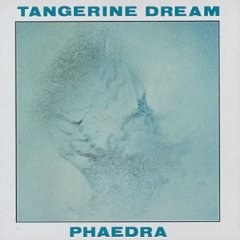 1-Phaedra
1-Phaedra
2-Rubycon
Phaedra and Rubycon have always been a pair for me and that pair is half of a quartet with Ricochet and Stratosfear. These are the signature Dream albums, the blueprint for every retro-space artist out there, the sound that influenced ambient, techno, and more. The classic trio of Edgar Froese, Christoph Franke and Peter Baumann found the secret of rubber band 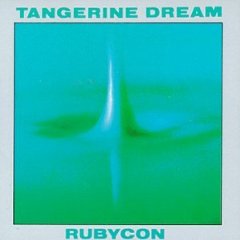 sequencer patterns discovered by Tonto’s Expanding Headband 2 years earlier. The Dream bound them in interlocking patterns, mellotron chords and synthesizer textures. Phaedra is transitional, retaining some of the avant-garde Ligeti-esque texturalism from Zeit on the mellotron drenched “Mysterious Semblance at the Strands of Nightmare,” but the title track and Rubycon, an album length composition were definitive journeys into inner space.
sequencer patterns discovered by Tonto’s Expanding Headband 2 years earlier. The Dream bound them in interlocking patterns, mellotron chords and synthesizer textures. Phaedra is transitional, retaining some of the avant-garde Ligeti-esque texturalism from Zeit on the mellotron drenched “Mysterious Semblance at the Strands of Nightmare,” but the title track and Rubycon, an album length composition were definitive journeys into inner space.
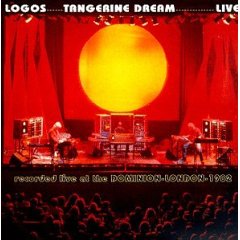 3-Logos
3-Logos
Tangerine Dream was an exciting live band in the 70s and half of the 80s. Listening to Logos, from 1982, you can hear why. This was the Dream working with a precision and structure that earlier works didn’t have, but they were still creating in long-form with a fair amount of improvisation. Johannes Schmoelling had been in the group for a while at this point and his influence is felt in gorgeous melodies and rhythms that have you ricocheting off your seat and between your headphone cups. This was really the truly last live recording from the group. Subsequent live albums would be more pre-programmed performances.
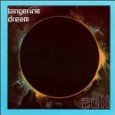 4-Zeit
4-Zeit
It’s been called their most experimental CD, but I think it’s their most thoughtful, controlled and uncontrived album. Playing with a cello quartet, it’s a journey of interwoven tones phasing through each other from acoustic to electric to something entirely new. Ambient before ambient, but owing much to Gyorgy Ligeti pieces like “Atmospheres,” synths, gliss guitar, organ and “noise generators” unfold in undulating, slow motion patterns across what was a double LP. This 1972 recording is a drone zone manifesto, and a beautifully enveloping work free of melody, rhythm and just about any other conventional music signpost.
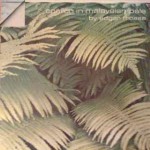 5-Epsilon in Malayasian Pale
5-Epsilon in Malayasian Pale
Possibly the most beautiful mellotron based album ever, Froese created two side-long suites with smokey mellotron flutes floating through Arp and EMS synths, and Farfisa organ into a space pastorale. The cover, by Monique Froese features a gatefold photo of a toddler Jerome Froese wearing nothing but a hat and a feathered boa. It speaks to the innocence of this music. I don’t have a link to this album since all the CD re-issues I could find featured Froese’s misguided re-recordings and additions. Try to find the original CD issue or the 1975 vinyl edition.
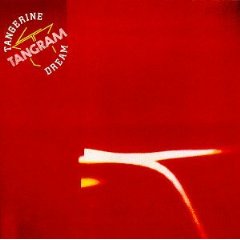 6-Tangram
6-Tangram
This is one of the last long-form Dream recordings. Originally a two sided work, Tangram is a multi-movement opus sometimes sabotaged by episodic writing, but still with some haunting themes amidst the pounding sequencers and more melodic invention than most prior Dream albums.
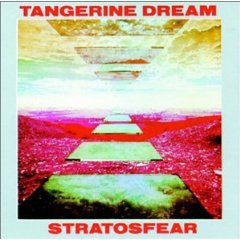 7-Stratosfear
7-Stratosfear
Part of the classic quartet of albums, this was their most commercial release to date and the first album with real melodies. It’s the sound of a band maturing and giving audiences and easier point of entry to music that is still completely tripped-out.
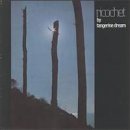 8-Ricochet
8-Ricochet
The other album in the classic quartet. Ricochet was their first live album, although it was all new materiel and sounds like a studio recording. Another two-sided excursion that moves from the quietest solo piano spot to thundering sequencers from the heavens.
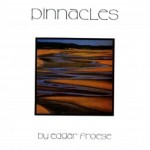 8 – Pinnacles
8 – Pinnacles
This album got overlooked a bit in a transitional time for Tangerine Dream. Digital synths were replacing analog ones and the sound had become more precise and chromium plated. Froese exploited those aspects in this cycle of minimalist influenced tracks of interlocking rotating sequences including the22 minute title suite which builds with a focused intensity.
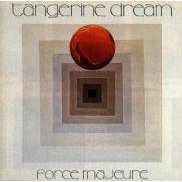 9-Force Majeure
9-Force Majeure
Something of an anomaly in that it features a drummer, Klaus Krieger, and gives the Dream a more fluid and aggressive sound, especially in the screaming side long title track.
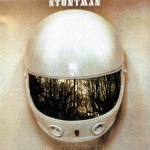 10-Stuntman
10-Stuntman
An album of electronic tone poems with surrealist titles like “Detroit Snackbar Dreamer” and of course, “A Dali-esque Sleep Fuse”. Froese condensed his previously more expansive music into smaller, more carefully conceived sonic objects that still sounded like voices form another dimension.
John Diliberto (((echoes)))

